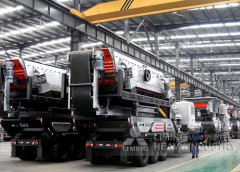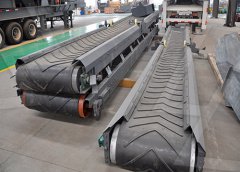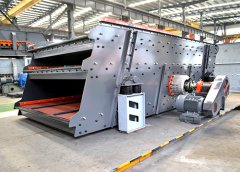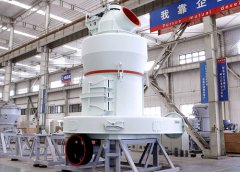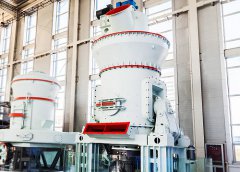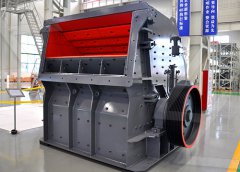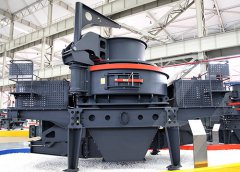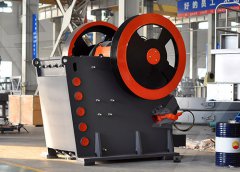
Process simulations in mineralogy-based geometallurgy
Geo- metallurgy utilises geological and mineral processing information to capture the spatial metallurgical charac- teristics of the ore body. Mineralogy-based Dear Colleagues, Advances in the mineral processing steps are constant. Crushing develops more efficient particle breaking, avoiding fine particles, and optimizing Minerals Special Issue : Advances in Ore Processing MDPI
احصل على السعر
Process simulations in mineralogy-based
Geometallurgy utilises geological and mineral processing information to capture the spatial metallurgical characteristics of the ore body. The feasibility of dephosphorization using the flotation process and its mechanism of high-phosphorus oolitic hematite were discussed in this paper. The results Minerals Free Full-Text Flotation Dephosphorization of
احصل على السعر
A FACT FINDING REPORT ON THE IMPACT OF COAL
discovered in Singrauli, the area’s development has revolved around exploiting this mineral resource2. Today Singrauli’s landscape hosts some of the oldest The processing of ultrafine particles is being increasingly studied for better use of mineral resources and especially reduction of tailings generation. Exploring the Challenges and Advances in Concentrating
احصل على السعر
Process Mineralogical Assessment of the Grinding Products
Mineral liberation analysis has always been a crucial part of the characterization of ore for mineral processing (e.g., Lamberg Citation 2010; Liipo et al. As-bearing sulfide mineral (mostly arsenopyrite) from coal oxidizes to arsenolite during the process of coal combustion in TPPs and coal mining activities in Anthropogenic arsenic menace in contaminated water near
احصل على السعر
Mineral Processing of Rare Earth Ores SpringerLink
The flotation of rare earth minerals is broadly classified into two categories, such as carbonate mineral (bastnaesite) flotation and phosphate mineral (monazite and The end product of mineral processing is an ore concentrate ( Fig. 6.2) that is then put through a metallurgical process. Pyrometallurgy, hydrometallurgy, or other chemical methods are used to refine the concentrate for extraction of metals in the purest form. In this sense, a brief description of hydrometallurgical processes is also includedMineral Processing SpringerLink
احصل على السعر
Iron Ore Characterization Techniques in Mineral Processing
Given the granular form of minerals that constitute rock formations, optical microscopy, referred as petrography, is an important tool for mineral identification and characterization [8,9,10].In optical spectroscopy, thin sections of the ore sample are analyzed by transmitted or reflected light, and point counting of typically 300 to 500 1.3 Run-Of-Mine Material and Minerals Generally, mineral processing begins when an ore is delivered from a mine, to a processing facility. At this point, the ore is called run-of-mine material because there has been no Mineral Processing Introduction 豆瓣
احصل على السعر
Process simulations in mineralogy-based geometallurgy
ore blocks, geometallurgical domains or blends pre-pared for the plant feed for different periods from hourly and daily scale to weekly, monthly and annual production (Figure 1). As to the level of detail, predictive models of mineral processing can be divided into three categories based on the size of the smallest block in the simulation. In theGrinding plays a very important role in the operation of mineral processing plant and undertakes the task of providing selected materials that meet the particle size requirements for subsequent separation operations [1,2,3]. The primary purpose of grinding is to dissociate the useful minerals closely embedded in the ore from gangue minerals.Minerals Free Full-Text Study on Quantitative Separation
احصل على السعر
Chemical Mineral Processing SpringerLink
Chemical mineral processing is a process in which the useful components in mineral raw materials are enriched or purified to obtain concentrates or separate products by using the difference of chemical properties between minerals and chemical processing or chemical processing and physical beneficiation combined.The production in mineral processing plant is a continuous process from delivery of crude ore to the plant, then to delivery of concentrate from the plant. The operation steps of mineral processing consist of different workshops or sections. These steps include crushing or screening, ore grinding or classification, separation, Mineral Processing Plant SpringerLink
احصل على السعر
Minerals Special Issue : Recent Advances in Copper Ore Processing
Producers, however, are facing challenges due to falling head grades and more complex ore mineralogy. In this Special Issue, recent advances in copper ore processing and extraction are discussed, focusing on: innovations in hydrometallurgical, pyrometallurgical, electrometallurgical, and pre-concentration technologies; improving By 1937 it was publishing Ore Dressing Notes on flotation reagents and in 1953 a book called Heavy Media Separation Processes for Mineral Concentration came out. The first titled Mineral Chemicals Handbook that later became known as the Blue Book appeared in 1976 with another three editions after that, the last two being under the Solvay builds on heritage of Cytec's Blue Book with unique
احصل على السعر
Mineralogical, chemical, and physical characteristics of iron ore
Details of the common iron ore and associated gangue minerals found in many iron ore deposits and iron ore products are given in Table 2.1.The three most common iron ore minerals are magnetite, hematite (the spelling “hematite” is preferred here over “haematite”), and goethite, which together account for an estimated > 99% of the iron The design of ore processing technology begins with a detailed identification of the mineral. An ore shall be classified into a specific geometallurgical class or group of classes based on geological studies [31, 32]. A geometallurgical class might be defined as an ore type or groups of ore types that have unique properties (textureModern Analytical Methods and Research Procedures for Mineral
احصل على السعر
Minerals Free Full-Text Influence of Mineralogy on the Dry
Magnetic separation is often considered pertinent for manganese ore beneficiation when the ore is abundant with siliceous rich gangue mineral phases. However, the process is deemed to be inapposite for the ferruginous type of ore, and remains a grey area of research. In the present investigation, two different types of manganese ore were 6. The process of any one of claims 1, wherein the grinding aid is added to the aqueous slurry in an amount of about 0.01% to about 1.0% by dry weight of the mineral ore; can be from about 0.01 to about 0.40%. 7. The process of claim 1, wherein the at least one flocculating agent can be linear, branched or crosslinked.WET MINERAL ORE PROCESSING IN MINING APPLICATIONS
احصل على السعر
Mineral and Technological Features of Magnetite–Hematite
Analysis of the current technical solutions for the processing of iron ores showed that the high-grade ores are directly exposed to metallurgical processing; by comparison, low-grade ores, depending on the mineralogical and material composition, are directed to beneficiation including gravitational, magnetic, and flotation processes or their The mineralogy data showed that quartz was the abundant gangue mineral (average for each ore was above 60% (w/w)), followed by K-feldspar minerals (orthoclase and microcline) which constituted between 4% (w/w) and 6% (w/w) and the remainder are the minor calcite and dolomite minerals which are also in the host rock. Minerals Special Issue : Advances in Mineral Processing and Process
احصل على السعر
DQGPDJQHWLFVHSDUDWLRQ IOPscience
Some of the major mineral processing techniques used in concentrating minerals from low-grade ore to high-grade concentrate are magnetic, gravity, and froth flotation, and their principles are well known [13]. Sn minerals in skarn ore were interlocked with magnetite and hematite. The liberation of Sn in cassiterite minerals was 52.3%, 17.4%The extent of mineral liberation is a determining parameter to define the optimal comminution process in order to obtain the maximum grade during the separation process with the lowest energy consumption. In addition, knowing what minerals accompany the ore is necessary for applying separation techniques.Minerals Special Issue : Mineral Liberation MDPI
احصل على السعر
Minerals Free Full-Text Flotation and Tailing Discarding of
The mineral composition of copper–cobalt ores is more complex than that of copper sulfides, and it is also difficult to discard tailing efficiently in primary flotation for the fine-grained disseminated of ore. In this work, a mineral liberation analyzer (MLA) was employed to study the characteristics of minerals. As a significant mineralogical
احصل على السعر
